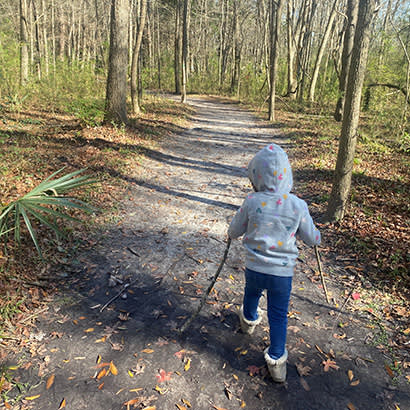
For an enhanced digital experience, read this story in the ezine.
Dorchester County, South Carolina, is home to diverse ecosystems, including swamps, blackwater rivers, bottomland hardwood forests, longleaf pine savannahs and tidal marshes. Residents and visitors can partake in outdoor recreational activities across the county’s vast park system, trails, waterways and forests. The county, however, has undergone significant growth and development in recent years, and has embraced the challenge of managing rapid urban growth while also trying to mitigate environmental damage and degradation.
In 2023, Dorchester County Government, along with Weston & Sampson, Audubon South Carolina, and the Dorchester County Conservation and Greenbelt Advisory Commission, collaborated with the community and Dorchester County Council to create the first-ever Dorchester County Greenbelt Master Plan. Dorchester County Council adopted the plan in May 2024 with the goal of protecting, purchasing and improving green space. This seven-month process included cataloging existing green space, reviewing existing policies, soliciting community feedback, developing GIS tools and creating a master plan to guide future green space program implementation.
Pairing Data and Feedback
The data collection process began with a high-level review of local and regional land-use plans, as well as incorporation of state-level guidelines. At the onset of the plan review process, eight key themes were identified based on the goals of the Greenbelt Program. Plans were reviewed and the presence or absence of the identified themes was noted. Of the themes, critical habitat protection, connectivity and public health/health equity were the most widely identified as opportunities for consistency and potential to leverage planning objectives and funding on diverse scales.
For this master plan, it was important to assess the unique perceptions, values and needs of Dorchester County residents and foster a sense of community ownership. Public engagement opportunities, including community surveys, open-house informational sessions, passive engagement stations, and close coordination with the Conservation and Greenbelt Advisory Commission, provided insight into priorities and conditions.
The first survey focused on community value and perception. Ninety-five percent of the 650 respondents indicated they “highly value” green space. The second survey focused on community need. More than 500 respondents provided key takeaways, including that “wildlife habitat value” and “ability to mitigate flooding,” were top-ranking factors for making land conservation selections. Preferred activities for future planning included “hiking,” “fishing,” “places to sit quietly” and “birdwatching/wildlife viewing areas.”
Two public engagement sessions provided a valuable opportunity to share information about the project with the public and to gain feedback from the community to inform the planning process. The mapping exercises also provided a ground-truthing opportunity to map areas for wildlife, recreation and water access. When asked what factors should be prioritized when making land conservation decisions, both the community surveys and the engagement sessions showed that “cost” ranked as the least important factor, whereas “wildlife” and “flood management” ranked at the top.
Identifying Priority Locations
The combined research approach of understanding existing conditions and community need informed a GIS prioritization matrix, with selected datasets, including flood hazard zones, canopy coverage, habitat cores, existing protected lands and more. The datasets were processed, scored and weighted, resulting in a countywide assessment of priority preservation areas based on criteria determined by stakeholders.
This GIS-based tool, combined with the established project approval process, provides a standardized pathway to help determine best locations for future green space acquisition. As more communities consider a coordinated approach to land conservation, the Dorchester County Greenbelt Master Plan and associated development process serve as a research-based, community-led model.
Kim Morganello is Senior Project Manager and Resilient Urban Designer; Lucas Hernandez is Climate Adaptation and Resilience Scientist; and Rachel Cotter, RLA, is Southeast Director of Design at Weston & Sampson.


